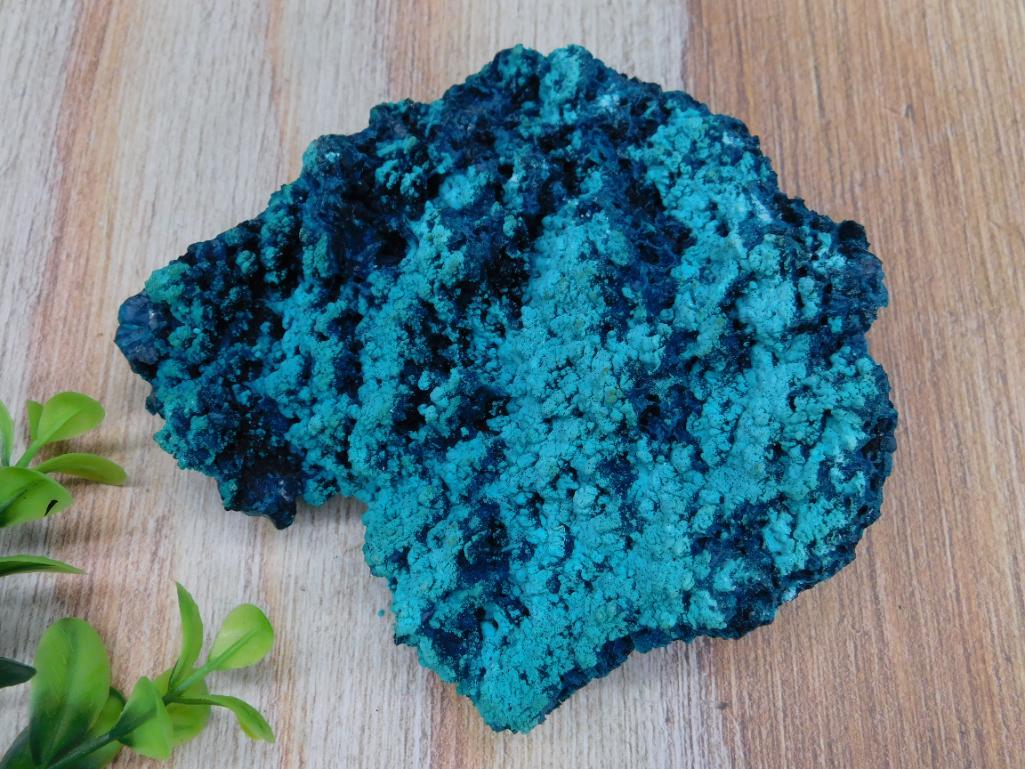
Everything You Need to Know About Chrysocolla!
Share
Chrysocolla: Earth’s Blue-Green Masterpiece
Origins & Naming
Chrysocolla, derived from the Ancient Greek words chrysos (“gold”) and kolla (“glue”), earned its name due to its early use in goldsmithing as a flux for soldering gold, a reference first made by Theophrastus around 315 BC.
Mineralogy & Physical Traits
This mineral is a hydrous copper phyllosilicate with the approximate formula (Cu,Al)\₂H₂Si₂O₅(OH)₄ · nH₂O. Its rich copper content gives rise to its distinctive blue and green tones.
Chrysocolla typically forms in oxidation zones of copper deposits and appears in various shapes—botryoidal (grape-like) masses, crusts, or vein-filling forms. Due to the incorporation of silica—especially in the form known as chrysocolla chalcedony or “gem silica”—its hardness varies broadly from about 2.5 (soft) up to nearly 7 (harder siliceous forms) on the Mohs scale.
Here’s a quick snapshot:
| Property | Details |
|---|---|
| Hardness | ~2.5–3.5 (up to ~7 if silicified) |
| Specific Gravity | ~1.9–2.4 |
| Cleavage | None |
| Fracture | Uneven / sub-conchoidal |
| Transparency | Translucent to opaque |
| Luster | Vitreous to dull |
| Typical Occurrence | Botryoidal/crust or vein-like formations |
All of these are well-documented in mineralogical studies.
Geological Significance
Chrysocolla is more than just visually striking—it serves as a secondary copper ore. Its presence can signal copper-rich regions and is therefore of interest in mining and geological surveying.
Historic & Artistic Applications
Beyond geology, chrysocolla has played artistic roles over centuries. In antiquity, it was glossed over as a pigment, and its vibrant colors were incorporated into artworks and decorative pieces—used as early as the Egyptian and Greek eras.
It’s also been a staple in jewelry-making—often cut into cabochons or beads and sometimes used as a colorful alternative to more precious stones like turquoise. However, due to its varying hardness, durable forms (e.g., the more siliceous ones) are preferred for wearable pieces.
A Word from the Field
On Reddit’s Rockhound community, an enthusiast summarized chrysocolla’s varied nature succinctly:
“Chrysocolla by itself is generally too soft to be a great jewelry gemstone. ‘Agatized’ chrysocolla is the best stuff for cabs.”
This sentiment echoes the broader consensus among gemologists about the importance of silica content for durability.
Chrysocolla elegantly blends scientific intrigue—through its copper-rich composition and geological formation—with centuries of human use in artistry and ornamentation. From its origin as "gold glue" in ancient goldsmithing to its modern-day presence in jewelry and geological studies, it remains a mineral of both beauty and substance.

1 comment
Chrysocolla is my favorite!